《快雪時晴》全劇由三股古今不同背景的戲劇線交錯而成。
著墨最深的一條脈絡,是以台北故宮的鎮館之寶〈快雪時晴帖〉為引線發展出來的,故事描寫:王羲之和張容乃世交好友,他們的家族都在五胡亂華之際,從北方遷徙到江南,少壯之時,兩人曾信誓旦旦,相約要收復失土、落葉歸根。到了晚年,張容在帶兵北伐前夕,收到王羲之捎來的〈快雪時晴帖〉,從這封看似家常問候的信裡,張侯隱隱意識到王羲之已不再執著於北伐大業,甚至有意在江南終老,對此,張容深不以為然,並決定等凱旋歸來要向王羲之曉以大義,怎奈他血濺沙場!為了探問〈快雪時晴帖〉的弦外之音,張侯不安的靈魂漫溯歷史長河,從唐太宗的昭陵、南宋的秦淮河之客舟、清乾隆帝的三希堂,來到台灣的台北故宮,他一路風塵濮濮,聽聞了許多「小我」在亂世自處的生命故事,也從〈快雪時晴帖〉身不由己的諸多遭遇,領悟到歷史的是與非,原是詭譎難測的。
第二條脈絡,描寫裘家母親生養裘平、裘安二子,本以為撒什麼種子就收什麼莊稼,一生勞苦應能換來兒孫承歡膝下,怎知兩個兒子在亂世中分別投向了狼國、虎國兩陣營,成了野心家爭霸業的馬前卒,乃致兄弟相殘。
第三條脈絡,以淡墨揮灑1949年前後渡海來台的兩個「外省人」的生命故事:姜成章被國軍「抓兵」時,還是個中學生,高曼青隨丈夫避難到台灣,丈夫卻銜命重回戰場,死於國共最後的激戰;切身的離散經驗,讓他們對〈快雪時晴帖〉背後的喪亂之痛有深刻的共鳴,其惜取當下的心聲,也讓張容體會到王羲之決定在江南重修家譜,讓後代子孫在新故鄉安身立命的意義。
英文內容大要:
The play consists of three plot lines set in different historical periods.
The main plot is based on “Timely Clearly after Snowfall”, a priceless work of Chinese calligraphy in the National Palace Museum in Taipei. The story describes how Wang Xi-zhi and Zhang Rung,
two good longtime friends through the good relations of their families, moved to the South of Yangzi River down from the North at a time when China was under attack by several tribes living on
the borderlands. In their youth, they vowed to recover the land they had lost and someday go back to their hometown. They gradually grow older. On the very eve of the day when Chang Rung had
prepared to launch a strike in the North, he received a letter from Wang Hsi-zhi, “Timely Clearly after Snowfall”. It appeared to be no more than the usual commonplace greetings, but General
Chang sensed that Wang no longer possessed the will to fight and return to the North. It now seemed that Wang simply wanted to go on living and eventually die in the South. Chang strongly
opposed such an idea and decided on the spot that he would give Wang the dressing down he deserved upon his victorious return from the North, but he did not anticipate his own demise in the
battle. After his death, his restless soul floated through the various historical epochs in his search for the true meaning of the letter. His soul traveled to the “Zhao-ling” graveyard of the
Tang Emperor Tai-zung, to the passenger ship on the Qin-huai River in the Southern Sung Dynasty, to the San-xi Hall of Emperor Qian-lung of the Qing Dynasty, and eventually made his way to the
National Palace Museum in Taipei. Throughout his travels, he heard numerous stories about how individuals managed to live meaningful lives in times of war and chaos. These stories, together
with the fact that Wang Hsi-zhi’s letter was kept in all places by all others but him, made him realize that in history there was no absolute right and wrong.
The second plot line concerns a woman in the Qiu family who has two sons, Qiu Ping and Qiu An. She believes in the saying “as you sow, so shall you reap” and thinks that some day the
happiness of having lots of grandchildren will be hers. However, during a time of war, her sons enlisted in two opposing armies, one of the Kingdom of Tigers, and the other of the Kingdom of
Wolves. The brothers became the pawns of ambitious rulers greedy for power, and were forced to take up arms against each other.
The third plot line tells the story of two “Mainland Chinese” who came to Taiwan in 1949 with the KMT army. When Jiang Cheng-chang was drafted by the KMT, he had just been a student in junior
high school. Gao Man-qing escaped to Taiwan with her husband, but soon her husband had to return to the battlefield and died in a bloody battle. With their own first-hand experience of the
diaspora, they clearly understand the suffering and pain implied in “Timely Clearly after Snowfall ”. In witnessing how they cherish the present day, Chang Rung finally understands why Wang
Hsi-zhi could decide to resettle his family in the South and the true significance of his making a new homeland for his descendants.
-
![客藝於藍:三峽染特展作品集[光碟]](https://www.books.com.tw/image/getImage?i=https%3A%2F%2Fwww.books.com.tw%2Fimg%2F001%2F072%2F55%2F0010725594.jpg&width=125&height=155)
客藝於藍:三峽染特展作品集[光碟]
$333 ~ 399 -
![鉋光掠影 一甲子的鉋藝年華:詹益農先生口述歷史影像紀錄專輯[光碟]](https://www.books.com.tw/image/getImage?i=https%3A%2F%2Fwww.books.com.tw%2Fimg%2F001%2F072%2F22%2F0010722237.jpg&width=125&height=155)
鉋光掠影 一甲子的鉋藝年華:詹益農先生口述歷史影像紀錄專輯[光碟]
$143 ~ 238 -
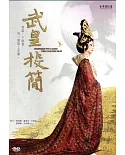
武皇投簡DVD
$285 ~ 300 -

十八羅漢圖(DVD)
$285 ~ 299 -
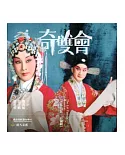
奇雙會(DVD)
$285 -
![高美館視覺藝術影像資料庫建構計畫:許淑真[光碟]](https://www.books.com.tw/image/getImage?i=https%3A%2F%2Fwww.books.com.tw%2Fimg%2F001%2F064%2F25%2F0010642511.jpg&width=125&height=155)
高美館視覺藝術影像資料庫建構計畫:許淑真[光碟]
$135 ~ 143 -
![育藝深遠-戰鬥吧!英雄4:不想說再見大作戰 [DVD]](https://www.books.com.tw/image/getImage?i=https%3A%2F%2Fwww.books.com.tw%2Fimg%2F001%2F069%2F34%2F0010693408.jpg&width=125&height=155)
育藝深遠-戰鬥吧!英雄4:不想說再見大作戰 [DVD]
$285 -
![高美館視覺藝術影像資料庫建構計畫:蘇旺伸[光碟]](https://www.books.com.tw/image/getImage?i=https%3A%2F%2Fwww.books.com.tw%2Fimg%2F001%2F064%2F25%2F0010642520.jpg&width=125&height=155)
高美館視覺藝術影像資料庫建構計畫:蘇旺伸[光碟]
$143 -
![阿彌陀埤[DVD]](https://www.books.com.tw/image/getImage?i=https%3A%2F%2Fwww.books.com.tw%2Fimg%2F001%2F072%2F59%2F0010725961.jpg&width=125&height=155)
阿彌陀埤[DVD]
$190 ~ 285 -
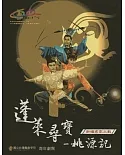
新編客家大戲:蓬萊尋寶:桃源記(光碟)
$238 ~ 599 -
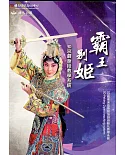
《霸王別姬》3D京劇身段教學系統
$285 -
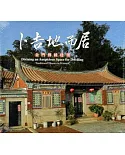
卜吉地而居:金門傳統建築(精華版)
$143 -
![高美館視覺藝術影像資料庫建構計畫:蘇信義[光碟]](https://www.books.com.tw/image/getImage?i=https%3A%2F%2Fwww.books.com.tw%2Fimg%2F001%2F064%2F25%2F0010642521.jpg&width=125&height=155)
高美館視覺藝術影像資料庫建構計畫:蘇信義[光碟]
$143 -
![高美館視覺藝術影像資料庫建構計畫:高燦興[光碟]](https://www.books.com.tw/image/getImage?i=https%3A%2F%2Fwww.books.com.tw%2Fimg%2F001%2F064%2F25%2F0010642523.jpg&width=125&height=155)
高美館視覺藝術影像資料庫建構計畫:高燦興[光碟]
$143 ~ 340 -
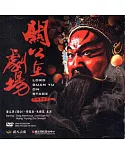
關公在劇場(DVD)
$285 ~ 299 -
![高美館視覺藝術影像資料庫建構計畫:林壽宇[光碟]](https://www.books.com.tw/image/getImage?i=https%3A%2F%2Fwww.books.com.tw%2Fimg%2F001%2F064%2F25%2F0010642515.jpg&width=125&height=155)
高美館視覺藝術影像資料庫建構計畫:林壽宇[光碟]
$143 -
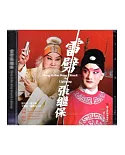
雷劈張繼保(DVD)
$285 -
![高美館視覺藝術影像資料庫建構計畫:陳水財[光碟]](https://www.books.com.tw/image/getImage?i=https%3A%2F%2Fwww.books.com.tw%2Fimg%2F001%2F064%2F25%2F0010642512.jpg&width=125&height=155)
高美館視覺藝術影像資料庫建構計畫:陳水財[光碟]
$143 -
![高美館視覺藝術影像資料庫建構計畫:李明則[光碟]](https://www.books.com.tw/image/getImage?i=https%3A%2F%2Fwww.books.com.tw%2Fimg%2F001%2F064%2F25%2F0010642507.jpg&width=125&height=155)
高美館視覺藝術影像資料庫建構計畫:李明則[光碟]
$143 -
![孝莊與多爾袞[2DVD]](https://www.books.com.tw/image/getImage?i=https%3A%2F%2Fwww.books.com.tw%2Fimg%2F001%2F077%2F92%2F0010779210.jpg&width=125&height=155)
孝莊與多爾袞[2DVD]
$105 ~ 449

](https://www.books.com.tw/image/getImage?i=https%3A%2F%2Fwww.books.com.tw%2Fimg%2F001%2F080%2F76%2F0010807639.jpg&width=300&height=345)